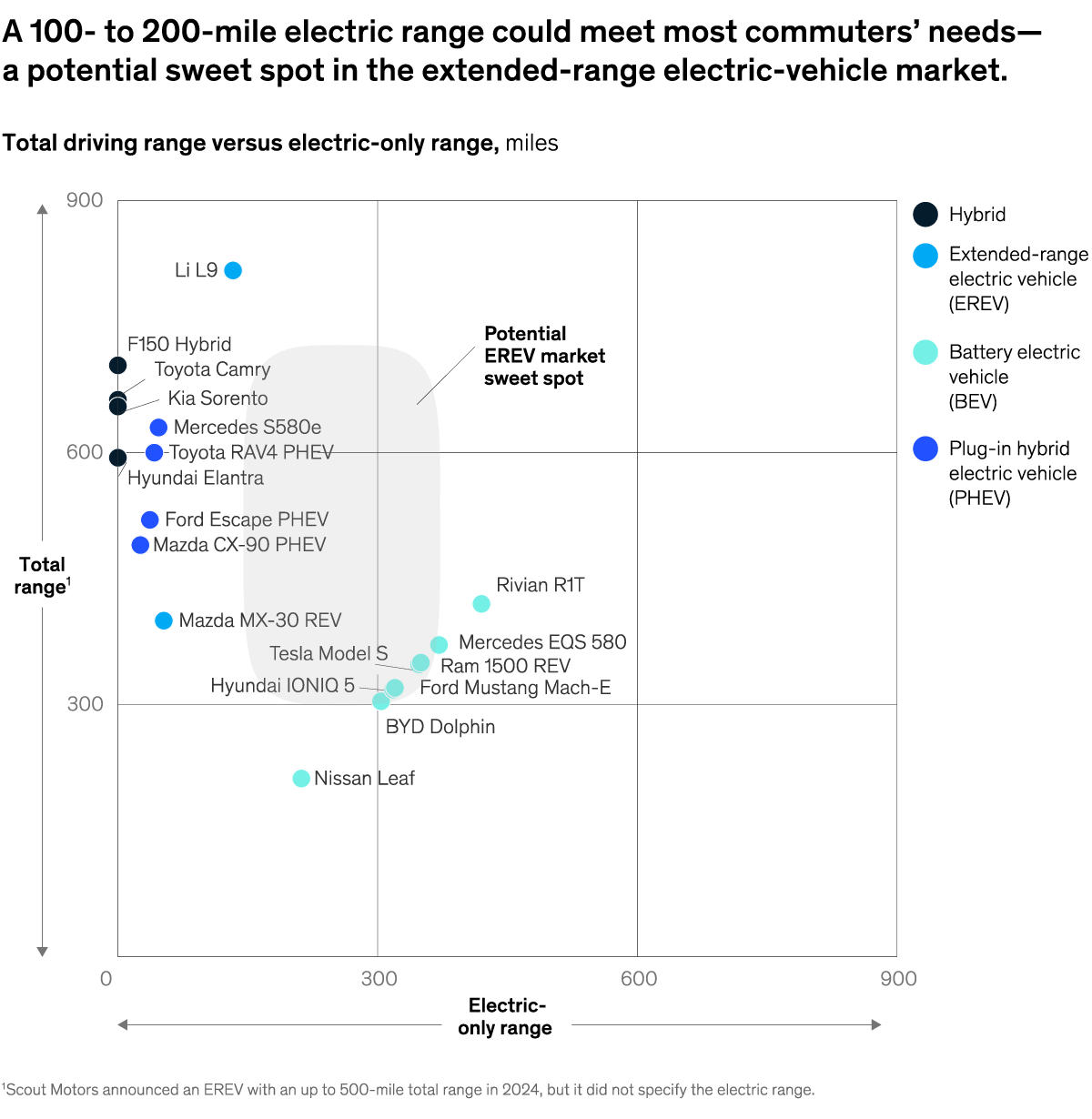Archives
- By thread 5376
-
By date
- June 2021 10
- July 2021 6
- August 2021 20
- September 2021 21
- October 2021 48
- November 2021 40
- December 2021 23
- January 2022 46
- February 2022 80
- March 2022 109
- April 2022 100
- May 2022 97
- June 2022 105
- July 2022 82
- August 2022 95
- September 2022 103
- October 2022 117
- November 2022 115
- December 2022 102
- January 2023 88
- February 2023 90
- March 2023 116
- April 2023 97
- May 2023 159
- June 2023 145
- July 2023 120
- August 2023 90
- September 2023 102
- October 2023 106
- November 2023 100
- December 2023 74
- January 2024 75
- February 2024 75
- March 2024 78
- April 2024 74
- May 2024 108
- June 2024 98
- July 2024 116
- August 2024 134
- September 2024 130
- October 2024 141
- November 2024 171
- December 2024 115
- January 2025 216
- February 2025 140
- March 2025 220
- April 2025 233
- May 2025 239
- June 2025 303
- July 2025 190
-
The best choice for improving feed production efficiency: our pellet mills
Dear Sir/Madam,
I hope this message finds you well. My name is Sandy, and I am reaching out on behalf of Sinova Technologies, a leading provider of customized machinery and comprehensive engineering solutions.
At Sinova Technologies, we specialize in designing and manufacturing high-performance equipment tailored to meet the unique demands of your industry. Our core products include:Pellet Mill : Efficient and durable crushing solutions for a wide range of materials.
Mixers: Precision mixing technology to ensure consistent and high-quality results.
Hammer Mill: Advanced granulation systems designed for optimal particle size and output.
What sets us apart is our commitment to delivering custom-engineered solutions that align with your specific operational requirements. Whether you need a standalone machine or a complete turnkey system, our team of experts is dedicated to providing innovative, reliable, and cost-effective solutions.
We would love to explore how Sinova Technologies can support your business goals. If you’re interested, I’d be happy to schedule a call or provide additional information about our products and services.
Looking forward to hearing from you!

Best regards,
Sandy Song
Sinova Technologies
www.sinova-group.com
by "Manager" <Manager@stcfeedmachines.com> - 04:30 - 18 Mar 2025 -
RE: Freight Enquiry for Agents in Mexico/GLA
Dear Sir/Madam,
This is Alina from GLA. Do you provide international logistics services?
We are looking for Mexico agents to provide a quote and local service. Our inquiries have not been settled, we‘re planning to invite another quality Mexico agent in the first quarter of this year. Do you plan to start a partnership with us?
Below are the inquiries from our agents:
For mutual support, we would like to offer the best deal on membership fees for you. I am looking forward to your early feedback.
Best Regards,
Alina

Ø The 11th GLA Conference in Bangkok Thailand, online album
Ø The 10th GLA Conference in Dubai UAE, online album
Ø The 9th GLA Conference in Hainan China, online album
AlinaOverseas DeptM: +86 18948304258
( Whatsapp & Wechat)
A:GLA Co.,Limited
HongChang Plaza, 2001,Shennan Dong Road,Shenzhen
518000,China
by "GLA Alina" <member039@glafamily.com> - 03:08 - 18 Mar 2025 -
How are mobility start-ups accelerating growth?
On McKinsey Perspectives
Six moves to make Brought to you by Alex Panas, global leader of industries, & Axel Karlsson, global leader of functional practices and growth platforms
Welcome to the latest edition of Only McKinsey Perspectives. We hope you find our insights useful. Let us know what you think at Alex_Panas@McKinsey.com and Axel_Karlsson@McKinsey.com.
—Alex and Axel
—Edited by Belinda Yu, editor, Atlanta
This email contains information about McKinsey's research, insights, services, or events. By opening our emails or clicking on links, you agree to our use of cookies and web tracking technology. For more information on how we use and protect your information, please review our privacy policy.
You received this email because you subscribed to the Only McKinsey Perspectives newsletter, formerly known as Only McKinsey.
Copyright © 2025 | McKinsey & Company, 3 World Trade Center, 175 Greenwich Street, New York, NY 10007
by "Only McKinsey Perspectives" <publishing@email.mckinsey.com> - 11:09 - 17 Mar 2025 -
SSWW--Luxury Sanitary Facrory in China
Dear info,
Glad to hear that you’re on the market for sanitary,we specialize in this field for 30 years,with 4 different factories to manufacture different kind of sanitary products inclduing bathtub, steam room, ceramic toilet, basin, bathroom cabinet, hardware mixer and shower enclosur since 1994.
We have been export to Pakistan for more than 10 years,Aqua Solution is one of our partner in India, Hoprfully we can work with you together.
Should you have any questions,call me,let’s talk details.
Best regards,
Sam
Sales Manager
by "Celia" <Celia@kingfitglobal.net> - 11:09 - 17 Mar 2025 -
Develop a integration strategy and unlock your data
Learn how to establish connectivity and reliability across your IT estate
CIO Guide to Integration.

Download whitepaper Organisations seek new technologies and industry trends to stay agile in the marketplace. To do so, their entire collection of digital building blocks, including data, LLMs, and processes, must be streamlined, connected, and accessible.
Teams look to IT leadership to help navigate these uncharted waters, and a comprehensive integration strategy is the first step.
Explore the CIO Guide to Integration and get started today.
© 2025, Salesforce, Inc.
Salesforce.com 2 Silom Edge, 14th Floor, Unit S14001-S14007, Silom Road, Suriyawong, Bangrak, Bangkok 10500
General Enquiries: +66 2 430 4323




This email was sent to info@learn.odoo.com
Manage Preferences or Unsubscribe | Privacy Statement
Powered by Salesforce Marketing Cloud
by "MuleSoft from Salesforce" <apacemarketing@mail.salesforce.com> - 11:08 - 17 Mar 2025 -
I’m giving you 7 FREE funnels (Starting NOW!)
Day 1 is Trey Lewellen’s secret to $100M in e-commerce!OK… I’ve got something really cool lined up for you this week!
I’m so pumped to tell you about this!
Every day for the next 7 days, I’m giving you access to a presentation from a top marketing expert, showing you EXACTLY how they built their most successful funnel…
But that’s not all… You’ll also get their entire funnel template for FREE!
Kicking things off for DAY 1… Trey Lewellen!
If you don’t know Trey… he’s made over $100 million selling physical products online.
That’s more than anyone in ClickFunnels history!!!
GO HERE TO WATCH THE FIRST VIDEO FROM TREY LEWELLEN AND STEAL HIS ECOM FUNNEL FOR FREE! >>
In this video he’s breaking down the exact e-commerce funnel that allows him to…
Launch a brand-new product every week…
Make sales on Day 1 (without expensive ads)...
Scale to six or seven figures, without holding a ton of inventory…
And today, he’s revealing exactly how he sets up his PROVEN Ecom framework… and giving YOU the same webinar funnel template that’s made him millions.
GO HERE TO WATCH THE FIRST VIDEO FROM TREY LEWELLEN AND STEAL HIS ECOM FUNNEL FOR FREE! >>
And BTW…. Let me clarify how the next 7 days/emails from me could change your life…
This means no guessing, no starting from scratch… Just plug in your offer, hit launch, and start seeing results.
The best part??
This is just Day 1!!!
And trust me, the next 6 days are gonna be just as powerful.
See you tomorrow for Day 2…
Enjoy!
Russell Brunson
P.S. - Don’t forget, you’re just one funnel away….
© Etison LLC
By reading this, you agree to all of the following: You understand this to be an expression of opinions and not professional advice. You are solely responsible for the use of any content and hold Etison LLC and all members and affiliates harmless in any event or claim.
If you purchase anything through a link in this email, you should assume that we have an affiliate relationship with the company providing the product or service that you purchase, and that we will be paid in some way. We recommend that you do your own independent research before purchasing anything.
Copyright © 2018+ Etison LLC. All Rights Reserved.
To make sure you keep getting these emails, please add us to your address book or whitelist us. If you don't want to receive any other emails, click on the unsubscribe link below.
Etison LLC
3443 W Bavaria St
Eagle, ID 83616
United States
by "Russell @ ClickFunnels" <noreply@clickfunnelsnotifications.com> - 07:34 - 17 Mar 2025 -
[FREE WORKSHOP] How to use story selling
Learn how stories do all the heavy liftingWhat’s up everyone!!
This week I’ve got something up my sleeve that I think will absolutely blow you away!
People ask me all the time, “What’s your secret sauce, Russell??”
Well… That’s EXACTLY what I’m going to reveal to you in this FREE STORY SELLING WORKSHOP!!
For the next few days, I’ll be sending you links to a free Story Selling Workshop, where you’ll discover how to sell more, convert better, and never feel “sales-y” again.
This is the secret weapon I use… And I’m guessing your competitors are using it too! So you need to know this!!
Here’s the BIG IDEA: The best marketers don’t “sell.” They tell stories that make people WANT to buy.
It’s not about pressure, tactics, or gimmicks, it’s about leading people to the “a-ha” moment where they convince themselves.
SIGN UP FOR THE FREE STORY SELLING WORKSHOP HERE >>Here’s what you’ll see on Day 1 of the workshop…
✔ Why stories break down resistance (and how to craft yours)
✔ The #1 mistake that kills conversions - and how to avoid it
✔ How to replace “selling” with simple, powerful storytelling
It all starts with Lesson 1 of the Workshop! Are you in??
SIGN UP FOR THE FREE STORY SELLING WORKSHOP HERE >>
Stay tuned… tomorrow, we go even deeper into this game-changing strategy. (Spoiler… I’m going to be talking about the epiphany bridge!)
See you in the workshop!
Russell Brunson
P.S. Don’t forget, you’re just one funnel away…
P.P.S - I teach what’s covered in this masterclass AND MUCH MORE in the selling online event I have coming up at the end of the month. Have you seen that yet? CLICK HERE TO LEARN MORE ABOUT SELLING ONLINE!
Marketing Secrets
3443 W Bavaria St
Eagle, ID 83616
United States
by "Russell Brunson" <newsletter@marketingsecrets.com> - 07:18 - 17 Mar 2025 -
Introducing Trendy Multi-Sofa Fabrics – No MOQ, Certified, and Ready to Ship
Dear info,
I hope this email finds you well.
I am reaching out to introduce our company, a Poland-based brand specializing in high-quality multi-sofa fabrics. With our headquarters in Poland and additional warehouses in Germany, Italy, and Romania, we ensure seamless distribution across Europe.
We maintain a vast inventory of over 10 million fabric in China, allowing us to supply orders with no minimum order quantity (MOQ). All our products come with the necessary certifications, ensuring quality and compliance with industry standards.
Having established strong relationships with major partners, including Home Centre in Dubai, we are keen to explore new collaborations. We would love the opportunity to share some of our latest trending designs that are currently in high demand in the market.
Would you be open to discussing how our fabrics can add value to your business? I would be happy to provide samples or further details at your convenience.
Looking forward to your thoughts.
Best regards,
SIC textile(hangzhou)co.,ltd
by "Font Pacapac" <fontpacapac@gmail.com> - 01:45 - 17 Mar 2025 -
tea & coffee bag filter paper
Dear Friend,
I hope this message finds you well. We at HANGZHOU KEBO PAPER INDUSTRY CO., LTD. specialize in manufacturing high-quality tea bag filter paper and coffee filter paper. Our products ensure durability, exceptional filtration, and a premium brewing experience.
We offer both heat seal and non-heat seal filter papers tailored to various needs. Our materials are eco-friendly and meet global food safety standards. Whether for tea bags or coffee filters, our products are trusted worldwide.
If you’re looking to enhance your product range with premium filter paper, I’d be delighted to discuss further. Let me know a convenient time for a call or sample request.
Best regards,
Jay Ding

HANGZHOU KEBO PAPER INDUSTRY CO.,LTD.Address: No.588 East Baiyunyuan Road,Tonglu Industrial Zone,Zhejiang,China 311500
Mob/WhatsApp: +86 15168251988 | Tel: +86 571 64609886 | Fax: +86 571 64609887
Email: jay@kebopaper.com | http://www.kebopaper.com
by "linette" <linette@hzkebopaper.com> - 01:33 - 17 Mar 2025 -
Re: Feedback on Workflow Builder
Hi,
Just following up on my previous message—did you get a chance to explore Workflow Builder yet? I'd love to hear any initial impressions or questions you might have!
Thanks,
Ruslana

by "Ruslana Brykaliuk" <ruslana.brykaliuk@synergycodes.com> - 10:17 - 17 Mar 2025 -
Full Directory of LOS ANGELES CAMP FAIR 2025 Attendees
--Hi,
Hope you are doing well!
We are following up to confirm if you are interested in acquiring the Visitors/Attendees List.
Event Details:
Event Name: LOS ANGELES CAMP FAIR 2025Date:23 Mar 2025
Location: CAL STATE UNIVERSITY, NORTHRIDGE, US
Attendees/Visitors Count:3,754
Each line of the list contains:
Contact Name, Email Address, Company Name, URL/Website, Phone Number, and Title/Designation.In today's digital era, the most effective way to propel your business forward is through digital strategies. This list empowers you to effortlessly disseminate information about your organization and products directly and digitally to potential buyers, laying the groundwork for numerous valuable client connections.
We are offering the list at a discounted cost. Please let us know if you're interested, and we will share more details with you.
Looking forward to hearing from you!Best Regards,
Juliana Almeida
by "Juliana Almeida" <juliana.almeida.brandcrafted@gmail.com> - 08:34 - 17 Mar 2025 -
What’s the CEO’s role in M&A? A leader’s guide
Leading Off
Define your priorities Brought to you by Alex Panas, global leader of industries, & Axel Karlsson, global leader of functional practices and growth platforms
Welcome to the latest edition of Leading Off. We hope you find our insights useful. Let us know what you think at Alex_Panas@McKinsey.com and Axel_Karlsson@McKinsey.com.
—Alex and Axel
Will 2025 bring a resurgence in M&A after three years of sluggish dealmaking? These days, uncertainty is the new normal in M&A. New McKinsey analysis finds that most companies are being cautious, as geopolitical tensions and postpandemic economic shocks continue to reverberate across sectors and regions. Yet there are also some signs that M&A activity may accelerate soon. As the year in dealmaking begins to take shape, we look at the most important roles leaders can play in the M&A process to create value and growth at their companies.
The question of which tasks CEOs and senior leaders should do themselves and which to delegate to others is age-old—and depends on the area of the business. When it comes to M&A, there are some duties that only the top boss can fulfill. McKinsey’s Anna Mattsson and Mieke Van Oostende have identified five “must do” activities for CEOs to manage before, during, and after a deal to improve the odds of success. These include defining M&A priorities while establishing the overall long-term corporate strategy and spearheading large, transformational deals while assigning other leaders to oversee smaller deals. “This will mean leaning in at all phases—for instance, helping to convince the target company to enter the deal, defining the integration strategy and the pace and degree of change, and taking any other steps required to get the deal over the line,” the authors say.
That’s the percent increase in the value of global deals over $25 million from 2023 to 2024; the total value rose to $3.4 trillion, up from $3.1 trillion the year before. The number of companies changing hands also increased (by 8 percent, from 7,206 in 2023 to 7,784 last year), and the average global deal value rose 4 percent (to $443 million, up from $424 million). McKinsey’s Jake Henry and Mieke Van Oostende observe that more favorable macroeconomic conditions and the financial strength of corporations in the market for deals could lead to sharply accelerated M&A activity in 2025. But they caution that fresh geopolitical, trade, or other policy-related changes could slow dealmaking momentum, “like an unseasonable frost landing on a green shoot.”
That’s McKinsey’s Emily O’Loughlin, Kameron Kordestani, and Rebecca Kaetzler on why managing culture is critical in dealmaking. McKinsey research indicates that to do this well, leaders should focus on three steps in their deal discussions: diagnosing how work gets done, setting cultural priorities, and hard-wiring and supporting cultural change. The authors say it’s important for leaders to take these actions early in the process and involve key stakeholders from both the parent and target companies, including employees, HR leaders, senior executives, and boards of directors.
Acquiring companies is not such a difficult task in its own right—for leaders, the bigger challenge is in bringing two organizations together. That’s the view of Brad Jacobs, CEO of the technology company QXO and executive chairman of the logistics company XPO, who has built several billion-dollar companies and led some 500 deals over four decades. “The real work starts after you own the business: integrating the companies, harmonizing the cultures, merging the technology and shared services, and getting the customers and employees of the business you acquired to buy into your vision,” Jacobs says in an interview with McKinsey Senior Partner Andy West. Jacobs also emphasizes that communication is key to successful integration. “You have to communicate through many channels: digitally, live, on Zoom calls, in town halls, in writing. And the communication must be precise,” he says. “If you have a large organization with thousands of employees, it’s a tall order to get everyone to understand where we’re going and how we’re going to get there.”
Employees generate value for an organization in so many different ways—from those who are in charge of critical processes and important initiatives to the influencers who motivate others to do their best. They can also be hard to keep once a merger closes, which is why retaining valuable employees after an acquisition is an essential responsibility for leaders. McKinsey’s Emily O’Loughlin and John Chartier say that leaders can retain top talent during all phases of dealmaking by actively identifying high-potential performers, keeping employees focused before and during integration of the companies, and continuing to engage high performers after the deal closes. “When looking at talent in both the parent and target companies, they should consider employees at all levels, not just in the first few management layers,” the authors say. “We all know people who play vital organizational roles without lofty titles or dozens of direct reports.”
Lead by leaning into dealmaking.
— Edited by Eric Quiñones, senior editor, New York
Share these insights
Did you enjoy this newsletter? Forward it to colleagues and friends so they can subscribe too. Was this issue forwarded to you? Sign up for it and sample our 40+ other free email subscriptions here.
This email contains information about McKinsey’s research, insights, services, or events. By opening our emails or clicking on links, you agree to our use of cookies and web tracking technology. For more information on how we use and protect your information, please review our privacy policy.
You received this email because you subscribed to the Leading Off newsletter.
Copyright © 2025 | McKinsey & Company, 3 World Trade Center, 175 Greenwich Street, New York, NY 10007
by "McKinsey Leading Off" <publishing@email.mckinsey.com> - 02:10 - 17 Mar 2025 -
Sporting goods: Explore the latest trends
On McKinsey Perspectives
Key themes for 2025 Brought to you by Alex Panas, global leader of industries, & Axel Karlsson, global leader of functional practices and growth platforms
Welcome to the latest edition of Only McKinsey Perspectives. We hope you find our insights useful. Let us know what you think at Alex_Panas@McKinsey.com and Axel_Karlsson@McKinsey.com.
—Alex and Axel
•
Slowing growth. 2024 was a tough year for the sporting goods industry, with companies tested by softer growth opportunities, ongoing inflation, and careful consumer spending. Yet despite these obstacles, the industry maintained an annual growth rate of 7% from 2021 to 2024, according to McKinsey Senior Partners Becca Coggins and Gemma D’Auria and their coauthors. From 2024 to 2029, the rate of growth is expected to settle at a more modest 6% per year, prompted by slowdowns in Asia–Pacific, Latin America, and Western Europe.
—Edited by Belinda Yu, editor, Atlanta
This email contains information about McKinsey's research, insights, services, or events. By opening our emails or clicking on links, you agree to our use of cookies and web tracking technology. For more information on how we use and protect your information, please review our privacy policy.
You received this email because you subscribed to the Only McKinsey Perspectives newsletter, formerly known as Only McKinsey.
Copyright © 2025 | McKinsey & Company, 3 World Trade Center, 175 Greenwich Street, New York, NY 10007
by "Only McKinsey Perspectives" <publishing@email.mckinsey.com> - 01:43 - 17 Mar 2025 -
High - quality Rock Drilling & Pneumatic Tools for Your Operations
Dear Sir/Madam,
I'm Eve Mia from Hunan Zhuzhou Changhong Mining Mechanical Co,Ltd, a Chinese enterprise specializing in manufacturing and R & D of rock drilling and pneumatic tools.Our products, including rock drills and pneumatic hammers, are designed with advanced technology. The rock drills feature high - speed drilling capabilities and excellent durability, suitable for various mining and construction projects, whether it's large - scale open - pit mining or complex underground tunneling. Our pneumatic tools are known for their high - power output and energy - saving design, reducing operational costs significantly.
We've served numerous international clients and received positive feedback. I've attached our product catalog for your reference. If you're interested, feel free to contact me.
Best regards,
Eve Mia
Hunan Zhuzhou Changhong Mining Mechanical Co,Ltd
WhatsApp: +86 19083016684
by "sd5" <sd5@chdrill.com> - 08:51 - 16 Mar 2025 -
Enhance Reliability & Efficiency with Zhuhai Qidian Electric Technology's Distribution Automation So
Greetings info,
I trust this email finds you in high spirits. I am Carin Fung, reaching out on behalf of Zhuhai Qidian Electric Technology, where we specialize in crafting robust distribution automation solutions that redefine reliability and efficiency. Our deep-rooted experience in R&D, spanning years, has allowed us to perfect technologies that empower the modern power grid.
Our portfolio spans Distribution Automation Terminals, Smart Switching Devices, Comprehensive Master Station Systems, robust Communication Solutions, Fault Location & Isolation Technologies, Load Management Systems, Power Quality Monitors, Autonomous Inspection Robots, and Remote Metering Solutions. Each product is a testament to our dedication to enhancing grid performance and reducing downtime.
What's more, we pride ourselves on offering customized solutions tailored to your unique challenges. Our expert R&D team stands ready to collaborate, ensuring our offerings fit seamlessly into your existing systems and align perfectly with your operational goals.
I would be delighted to discuss how our solutions can help optimize your distribution network. Attached picture is a brief series of our products.
Eager to hear from you and explore potential synergies.
Best wishes,
Carin Fung
Business Department Manager
Mob/ Whatsapp: +86 15015707214
Skype: carin.fung
Wechat: carinfung
Email address: carinfung@126.com
Zhuhai Qidian Electric Technology Co., Ltd.
Add: Room 302, Building 5, No.16 jinxing Road, Tangjiawan Town, Xiangzhou District, Zhuhai City, Guangdong Province, China
Alibaba: https://genelectric.en.alibaba.com

by "Mgadly Kapelner" <kapelnermgadly@gmail.com> - 05:40 - 16 Mar 2025 -
Top 10 reports this quarter
McKinsey&Company
At #1: Superagency in the workplace: Empowering people to unlock AI’s full potential Our top ten reports this quarter look at M&A trends, the luxury industry, workplace productivity, and more. At No. 1, McKinsey’s Hannah Mayer, Lareina Yee, Michael Chui, and Roger Roberts explore companies’ readiness for AI adoption, and conclude that the biggest barrier to scaling is not employees—who are ready—but leaders, who are not steering fast enough.

1. Superagency in the workplace: Empowering people to unlock AI’s full potential (47 pages)
Almost all companies invest in AI, but just 1 percent believe they are at maturity. Our research finds the biggest barrier to scaling is not employees—who are ready—but leaders, who are not steering fast enough. Think big
Share these insights
This email contains information about McKinsey’s research, insights, services, or events. By opening our emails or clicking on links, you agree to our use of cookies and web tracking technology. For more information on how we use and protect your information, please review our privacy policy.
You received this email because you are a registered member of the Top Ten Most Popular newsletter.
Copyright © 2025 | McKinsey & Company, 3 World Trade Center, 175 Greenwich Street, New York, NY 10007
by "McKinsey Top Ten" <publishing@email.mckinsey.com> - 10:02 - 16 Mar 2025 -
Professional casters, super promotion in September
Dear info:
To thrill the market and develop the new products in the market, we are during our yearly biggest promotion. All of attached items enjoy discount up to 10% discount.
Our promotion will start from SEP. 1th. to SEP. 30th. Please catch up with this yearly biggest promotion to gain a big advantage in both price and market trends.
Order now and enjoy a limited time discount, Colson style 4 inch medium duty TPR caster wheel (Reach and ROHS dual-certified), $0.99/ pcs, less than $1.00 each for your mobile device upgrade, bringing unprecedented convenience.
Waiting for your active action.


Best Regards
Benny Huang
Marketing Manager
Zhongshan PLEYMA caster manufacturing Co., Ltd.
Add: No.2-2 Ailang Road, Taifeng Industrial Zone, Xiaolan Town, Zhongshan City, Guangdong, China
Tel: +86 760 88505176
Mobile: +86 18607603318
Fax: +86 760 8850 5175
WhatsApp: +86 18607603318
Wechat: 18607603318
by "Marshall Turner" <pnpfkyro@gmail.com> - 09:56 - 15 Mar 2025 -
The week in charts
The Week in Charts
EV range anxiety, mobile banking, and more Share these insights
Did you enjoy this newsletter? Forward it to colleagues and friends so they can subscribe too. Was this issue forwarded to you? Sign up for it and sample our 40+ other free email subscriptions here.
This email contains information about McKinsey's research, insights, services, or events. By opening our emails or clicking on links, you agree to our use of cookies and web tracking technology. For more information on how we use and protect your information, please review our privacy policy.
You received this email because you subscribed to The Week in Charts newsletter.
Copyright © 2025 | McKinsey & Company, 3 World Trade Center, 175 Greenwich Street, New York, NY 10007
by "McKinsey Week in Charts" <publishing@email.mckinsey.com> - 03:35 - 15 Mar 2025 -
Rapier loom: the future choice of weaving industry
Dear info,
Hello!
My name is Kevin and I represent Zhejiang Haisen Textile Machinery Technology Co., Ltd, a prominent manufacturer of high-speed rapier looms in China.
Our high-speed rapier looms are engineered to deliver excellent results for a variety of fabrics, such as cotton fabrics, linen fabrics, wool fabrics, silk fabrics, chemical fiber fabrics, glass fiber fabrics, metal fiber denim fabrics, shirt fabrics, and suit fabrics, curtain fabrics, sofa fabrics, and wall fabrics.
We have attached photos of our high-speed rapier looms for your reference.
We would be delighted to receive your inquiries and start a conversation about how our products can meet your fabric production requirements.

Thank you and best wishes,
Kevin
Zhejiang Haisen Textile Machinery Technology Co., Ltd.
Website address: www.chinahaisen.com
by "Robert" <Robert@cnhaisen.com> - 02:05 - 15 Mar 2025 -
You going to launch YOUR own Saas business?
We’re giving you 100% of the profits - No catch.Hey, it’s Todd again!
OK… real quick, Did you get a chance to attend one of the “white label” workshops Russell hosted this week?
He did a demonstration/workshop on what we’re calling “THE LAST SECRET”, and it’s one of the craziest opportunities Russell has ever presented in my opinion!
It’s wild! Everyone is going crazy about it. You will be shocked.
As a ClickFunnels user I’m sure you’re busy working on building your own products, writing your own copy, designing your own graphics, etc.
But, what The Last Secret does for you is cut all that time down to practically nothing!
What I mean is, instead of you having to take forever to get all of those things done first, you can sell our products and keep 100% of the profits. Russell gives you the funnels… and the training… and the proven products… You just cash in on what we’ve already built!
Let me explain what that really means for you:
Doesn’t matter who’s in the Whitehouse. Doesn’t matter who’s in charge in your country. Doesn’t matter if the economy, stock market, or crypto market is up, down, sideways, or any which way…
With The Last Secret opportunity you put yourself IN CONTROL!
And this is the best part:
It’s FREE with your ClickFunnels subscription!
You can unlock the following for FREE:
- White Label of the ‘Doodly’ Software
- White Label of ‘Toonly’ Software
- White Label of ‘Voomly’ Software
- White Label of ‘Startup Drugz’ Merch Store (with 300 products!)
- White Label of ‘Funnels and Templates’ membership site
And much more!
This is YOUR chance to build your very own ‘SAAS’ business WITHOUT the crazy, up-front investment and without developing a product from the ground up. You get the PROVEN TO CONVERT product, including the sales funnels and follow up emails…
You also get the marketing TRAINING from Russell and his team, complete with a 30-day fast track that’s designed to help anyone succeed with online sales.
It’s perfect for beginners or advanced marketers looking for another revenue stream.
But like I mentioned in the last email… Russell won’t have this open for long, and he can’t let everyone do this. I’m pretty sure they are cutting it off soon! (Real soon!)
I’d take advantage of this offer now before it’s too late.
To your success,
Todd Dickerson
© Etison LLC
By reading this, you agree to all of the following: You understand this to be an expression of opinions and not professional advice. You are solely responsible for the use of any content and hold Etison LLC and all members and affiliates harmless in any event or claim.
If you purchase anything through a link in this email, you should assume that we have an affiliate relationship with the company providing the product or service that you purchase, and that we will be paid in some way. We recommend that you do your own independent research before purchasing anything.
Copyright © 2018+ Etison LLC. All Rights Reserved.
To make sure you keep getting these emails, please add us to your address book or whitelist us. If you don't want to receive any other emails, click on the unsubscribe link below.
Etison LLC
3443 W Bavaria St
Eagle, ID 83616
United States
by "Todd Dickerson (ClickFunnels)" <noreply@clickfunnelsnotifications.com> - 01:33 - 15 Mar 2025



































